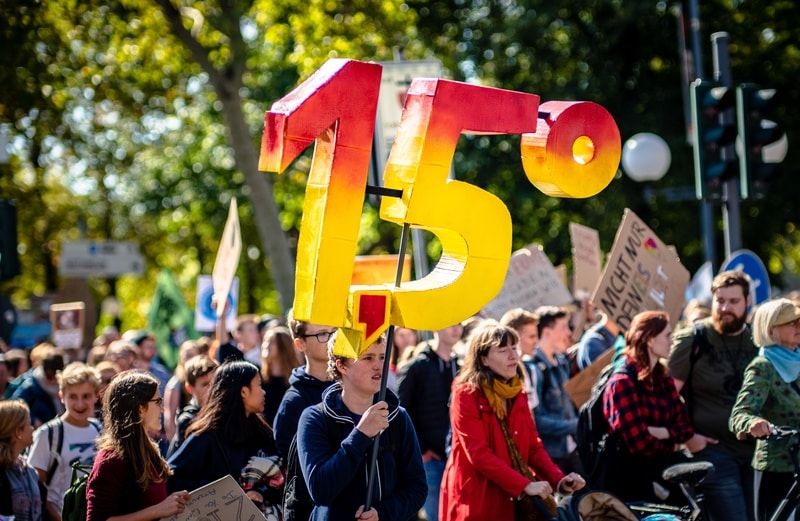
Climate change is a worldwide problem, and to tackle it, we need worldwide action. That’s why, in 2015, the leaders of 196 countries met in Paris, France, to come up with a plan to address climate change. They all promised to work together to reduce the impact of harmful emissions on the planet, in an agreement known as the Paris Agreement.
—
The main aim of this agreement is to keep the rise in global temperatures to well below 2 degrees Celsius, and ideally below 1.5 degrees Celsius, by the year 2100.
A few degrees may not sound like much, but the planet has already warmed by slightly more than 1 degree Celsius since the 1700s, and this has led to more extreme weather around the world, putting millions of people and animals at risk. It is crucial to stop the Earth from getting any warmer.
How Can We Achieve This?
Countries can do this by lowering their carbon emissions. Carbon dioxide, or CO2, is released into the atmosphere when we burn fossil fuels, such as coal or oil, to generate energy. Because CO2 traps heat from the sun, too much of it leads to global warming. Over the last century, humans have been burning a lot of fossil fuels to power factories, vehicles and homes. As part of the Paris Agreement, countries will have to switch to greener methods of producing energy, such as wind and solar power.
How Can Different Groups Do Their Part?
Before countries can get to work, it’s important to create a level playing field. After all, many of the world’s biggest carbon emitters are large, wealthy countries who can afford to protect themselves against the effects of climate change, while their poorer neighbours are left to struggle alone.
To make things fairer, the Paris Agreement allowed countries to set their own targets for reducing their carbon emissions. Powerful governments, such as the United States and the European Union, were expected to set tougher targets. Poorer nations would be also given more support and resources.
Of course, governments can’t fix things on their own, so they made sure to include local governments and community leaders, as well as companies, small businesses and charity groups in their plans. Companies and communities would be rewarded for going green.
Did America Leave the Paris Agreement?
After signing the Paris Agreement, most nations felt hopeful about the future. But in 2017, the United States decided to pull out of the Paris Agreement. The US President, Donald Trump, said the agreement was too tough on the United States and that the country would lose money if it couldn’t sell coal and oil. But the US wasn’t allowed to quit straight away. It was told it needed to wait three years, until November 2020. That means it is still currently a member of the Paris Agreement. Some Americans were upset by the decision to leave, and promised to keep fighting climate change anyway.